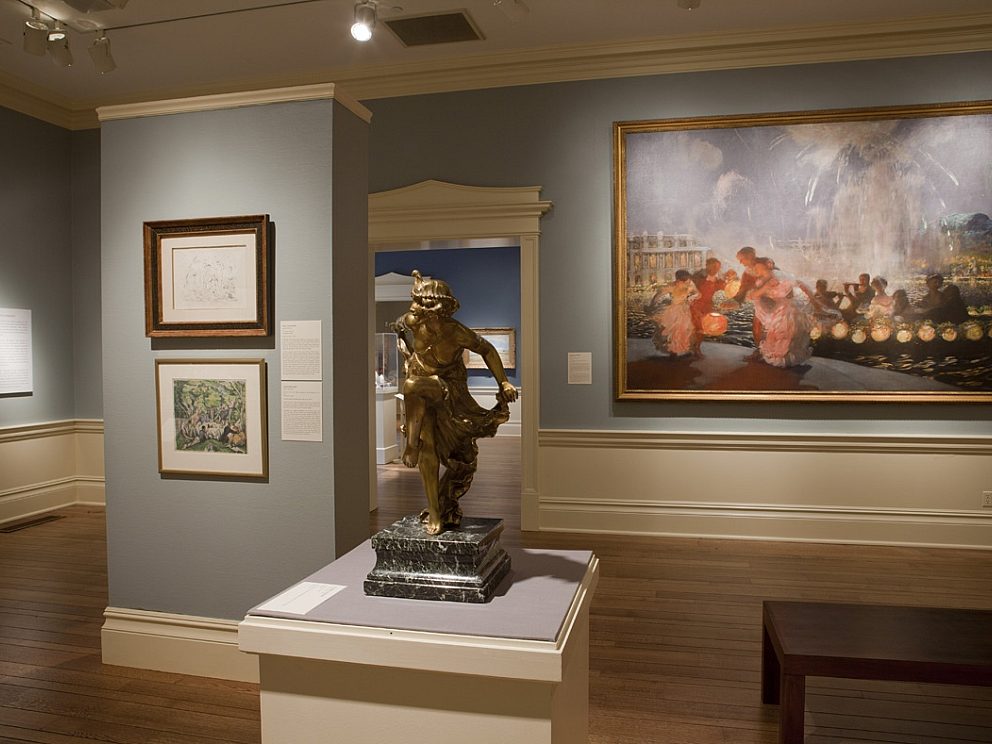
The Dixon prides itself on its specialized collection, focused primarily on nineteenth and early twentieth-century Western art. But even within that niche, it can be hard to know where to start. These eight works, currently on view in the galleries, and eight movies complement each other in mood, subject, or appearance. Which ones sound most interesting to you?
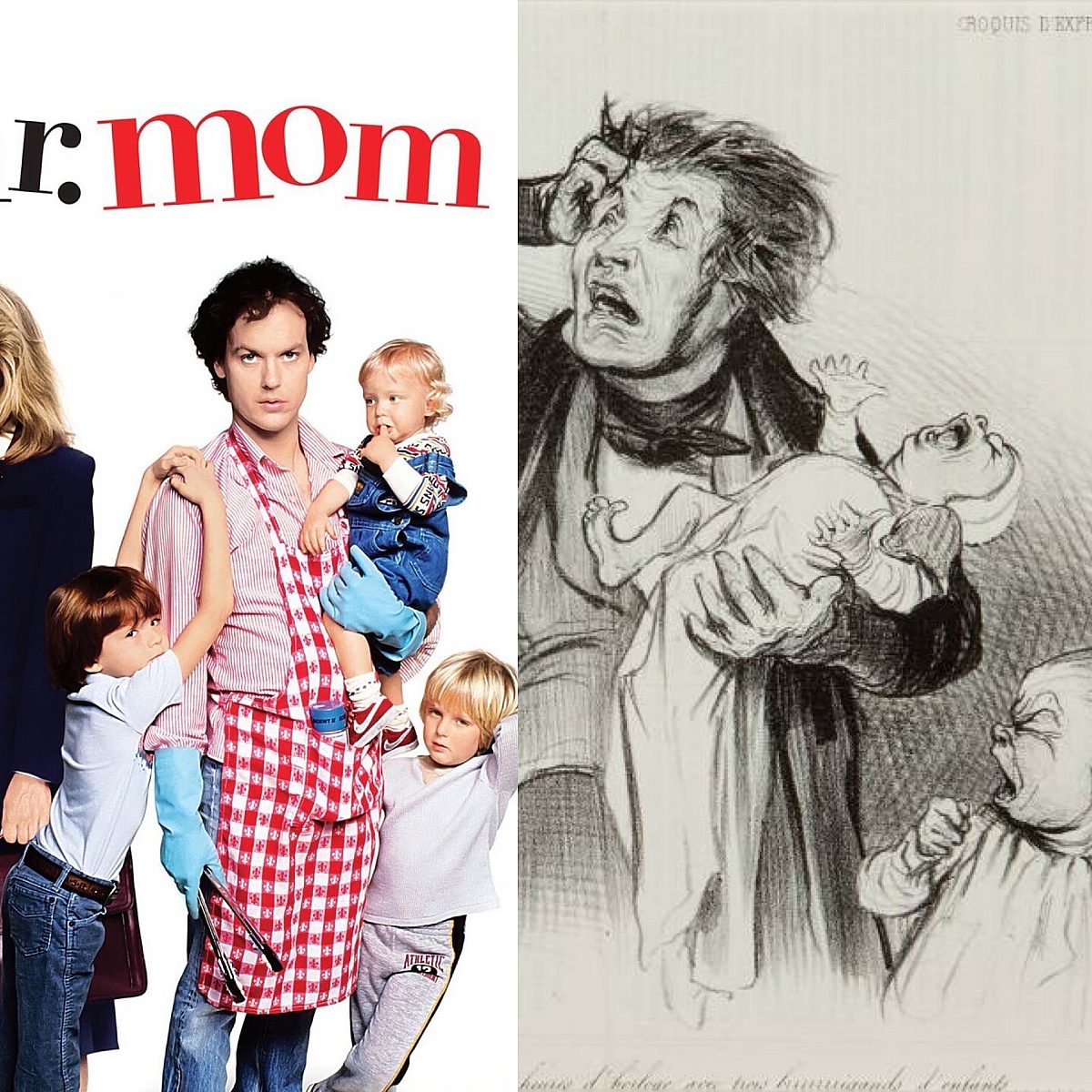
If you like… Mr. Mom (1983), you should look for Crrrrrr... Woman!..... to leave a man alone for four hours with these three howling children by Honoré Daumier (1838).
Daumier was a French artist best known for his satiric lithographs which poked fun at everyone from the king of France to the church. This cartoon, depicting a father and three screaming children, is one of his more timeless jokes, made repeatedly in art, including the 80s Michael Keaton hit.
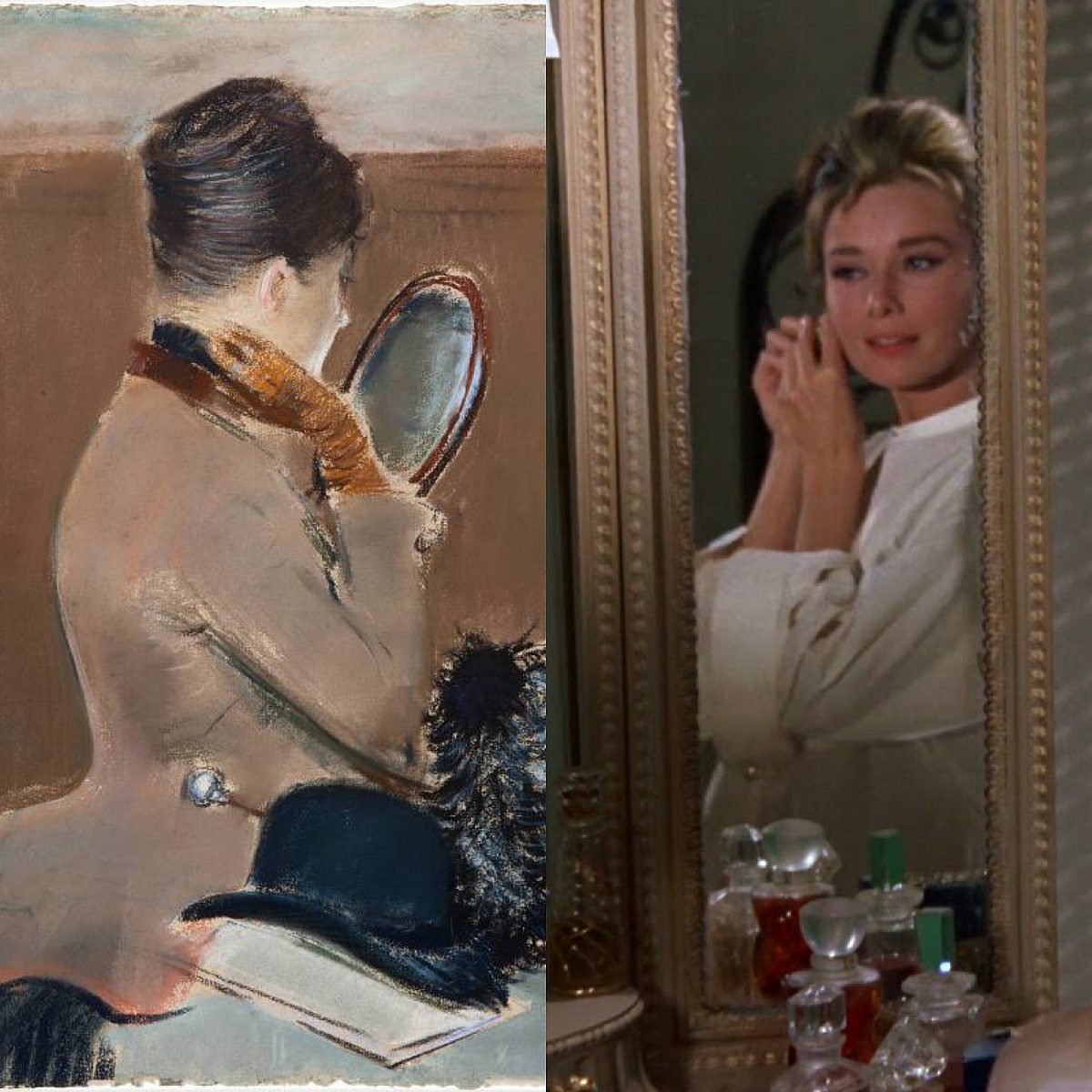
If you like… Breakfast at Tiffany’s (1961), you should look for The Final Touch by Paul-César Helleu (1885).
This painting depicts one of the many society women Helleu became famous for portraying. She’s almost ready to go out, assumedly with a man due to the walking stick and bowler hat beside her. The model is suspected to have been Marie Renard, but she also bears a striking resemblance to one of modernity’s favorite society women – Aubrey Hepburn, especially in her role as Holly Golightly.
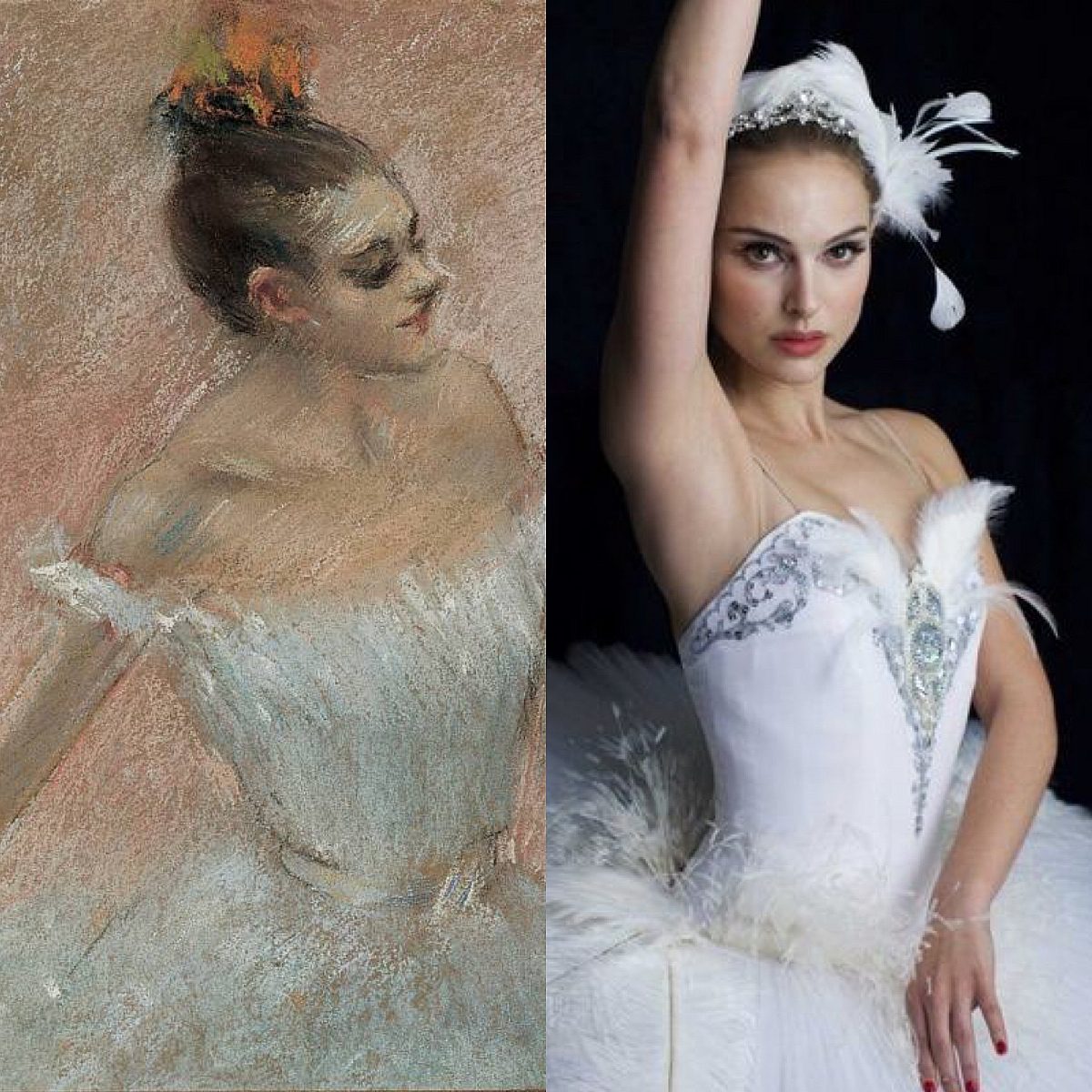
If you like… Black Swan (2010), you should look for Dancer with a Mirror by Jean-Louis Forain (1885).
Like his mentor Edgar Degas, Forain frequently featured dancers in his paintings and fan designs. This dancer is mid-pose, one hand raising a mirror to her face. Her eye makeup is heavy, the decoration in her hair almost resembling flames. Forain’s brushstrokes are rough, scraping, like his prints and etchings. The energy of the piece calls to mind that of the ballet-thriller film Black Swan.
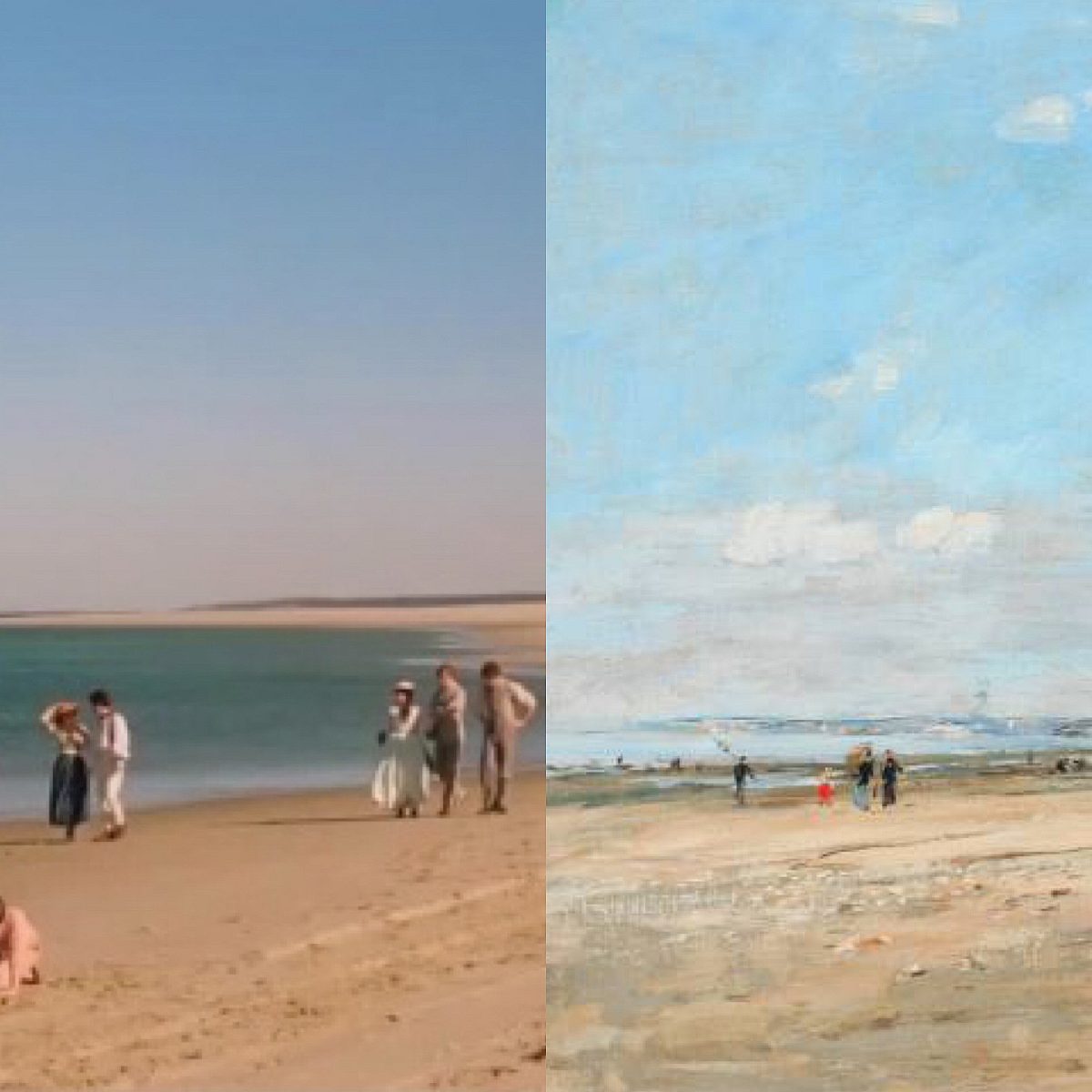
If you like… Little Women (2019), you should look for The Beach at Benerville, Low Tide by Eugène-Louis Boudin (1892).
“King of the Skies” Eugène-Louis Boudin favored the beaches of Normandy in Many, if not most of his 11,000 works. He was a fierce advocate of en plein air painting, spending hours out on the sand himself. Even in the 1800s, walking along the beach was a popular activity (check out our current exhibit: Sporting Fashion for period examples). Across the pond in America, the four main characters of Little Women and its sequels were doing the same – picnicking and playing on a beach much like Benerville.
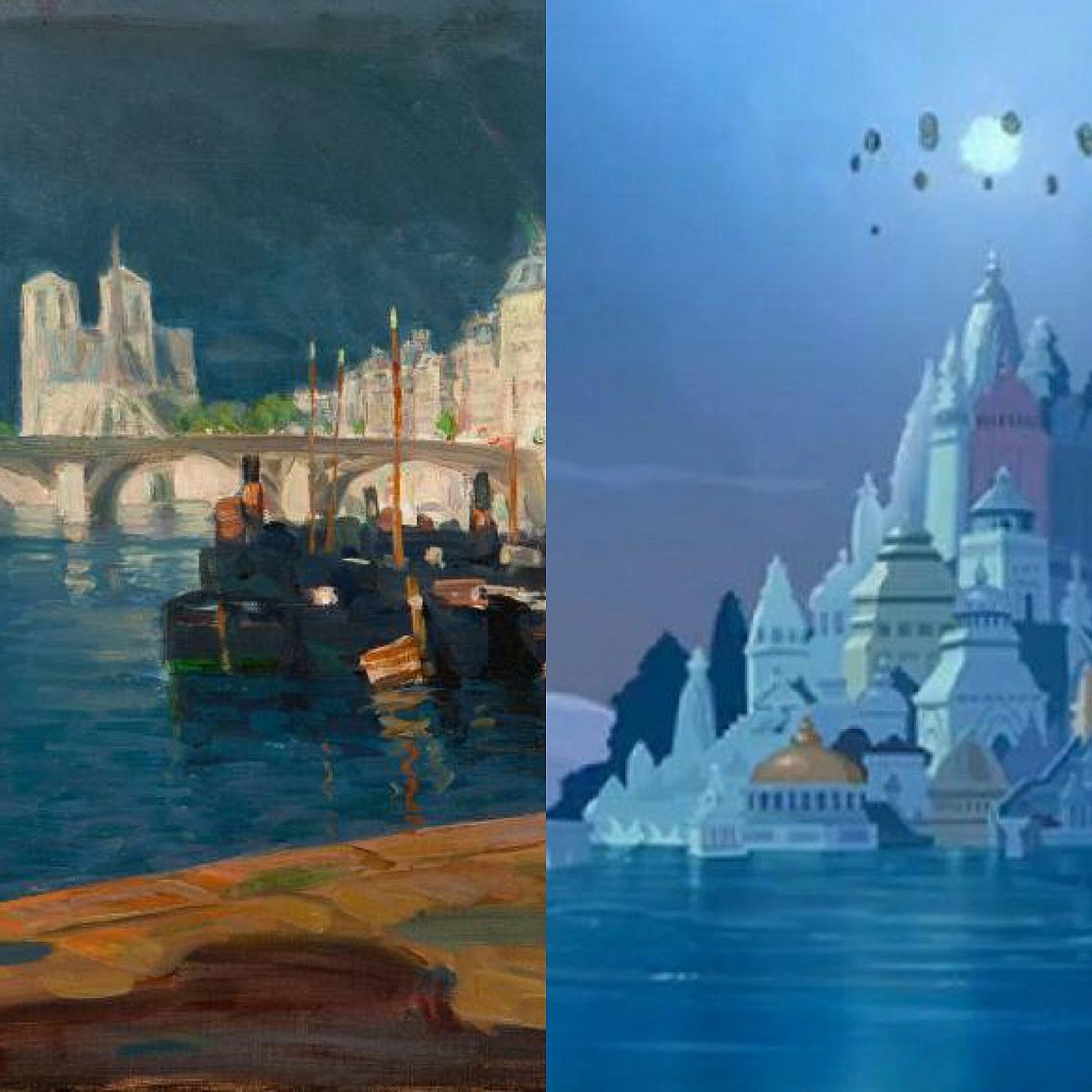
If you like… Atlantis: The Lost Empire (2001), you should look for View of the Seine, Looking toward Notre-Dame by Henry Ossawa Tanner (1896).
Tanner traveled to Paris in 1891 partially to escape the racism that he was experiencing at home in the states. While he was there, he found success painting religious scenes, a departure from his earlier marine life subjects. This work straddles that line, it would be a typical river scene if not for the glowing white structure of Notre Dame. Tanner gives an almost spiritual significance to the cathedral and larger city of Paris that became his second home. His rendering of the city as an otherworldly place, somehow beyond the restraints of the regular world reminds me of the myth of Atlantis.
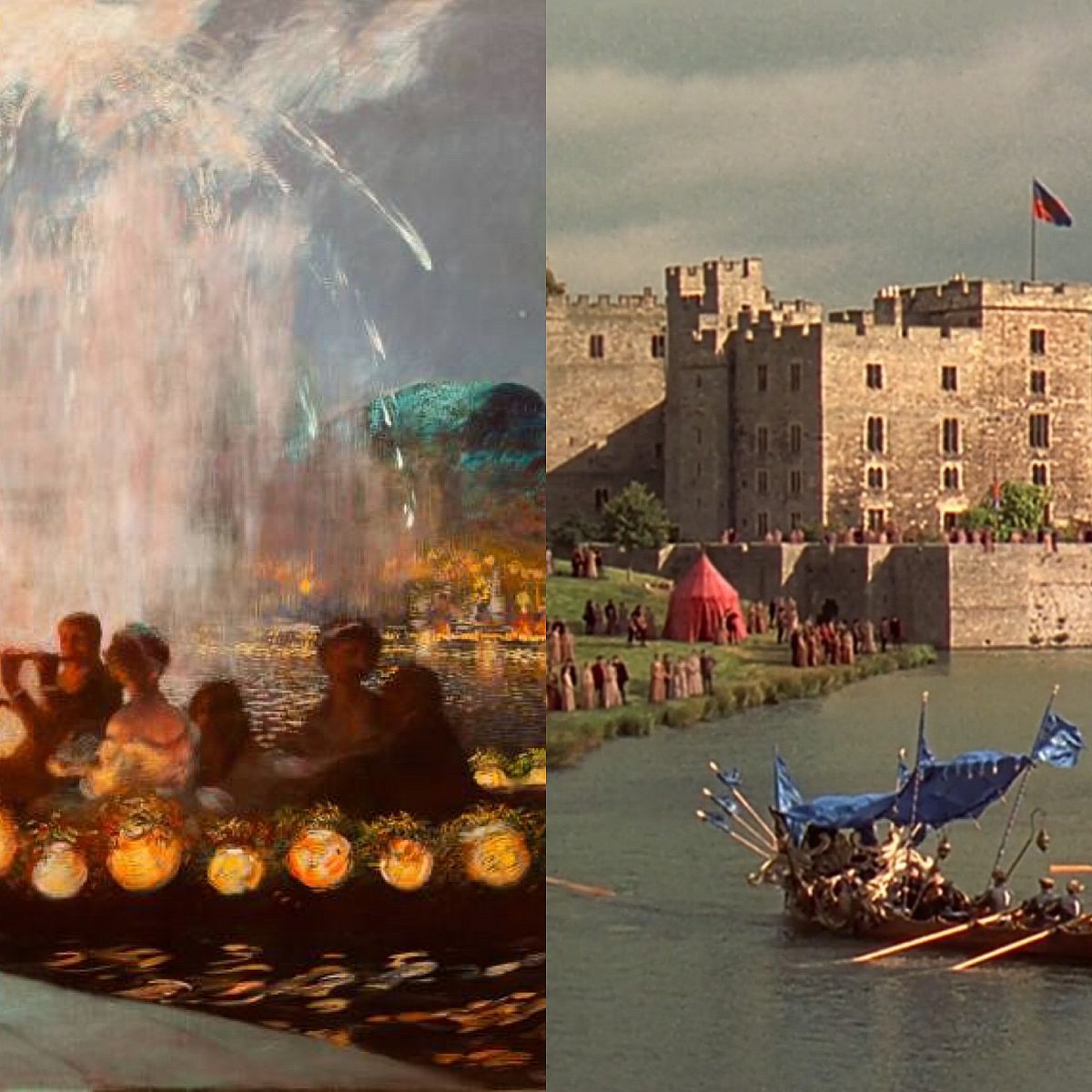
If you like… Elizabeth (1998), you should look for The Joyous Festival by Gaston La Touche (1906).
While La Touche’s celebration is set at the Palace of Versailles, the French are far from the only examples of extravagant royalty. The Elizabeth trilogy tells the tale of the titular queen of England and at one point, features a party on the water remarkably similar to The Joyous Festival. La Touche was part of a resurgence of Rococo at the turn of the century, an art movement with themes of opulence and elaborate dramatics.
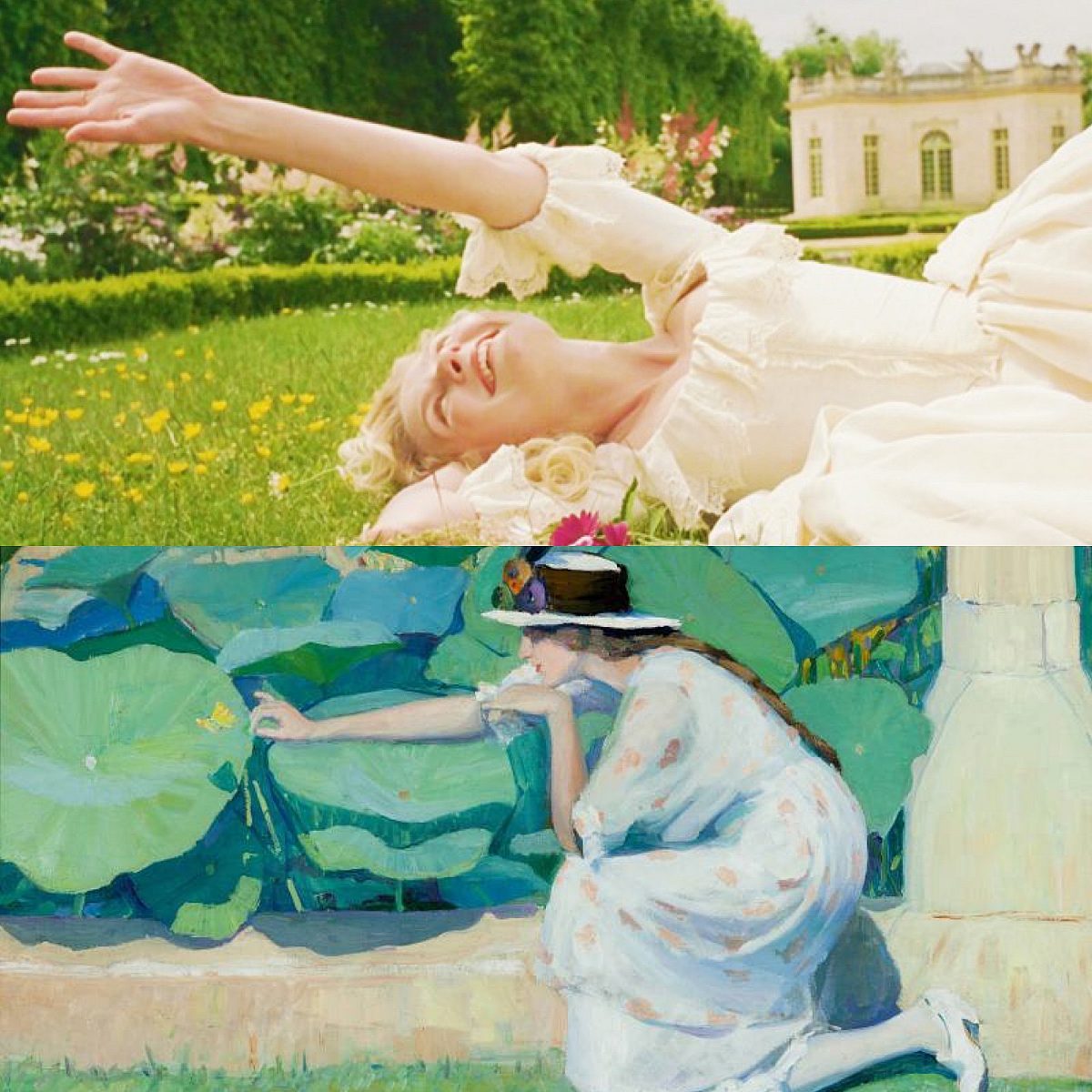
If you like… Marie Antoinette (2006), you should look for Lure of the Butterfly by Jane Peterson (1914).
Sofia Coppola’s historical drama is a sympathetic biopic of the titular French queen. It heavily focuses on Antoinette’s youth and attempts to fit into the unfamiliar French court. Often, she turns to the outdoors and finds wonder in small things, such as Peterson’s young woman in awe of a butterfly. Like Coppola, Peterson often made art that humanized and supported modern women. And like Antoinette, Peterson often found herself wondering around extravagant gardens (in this case, the estate of the designer Tiffany) looking for small human moments like this one.
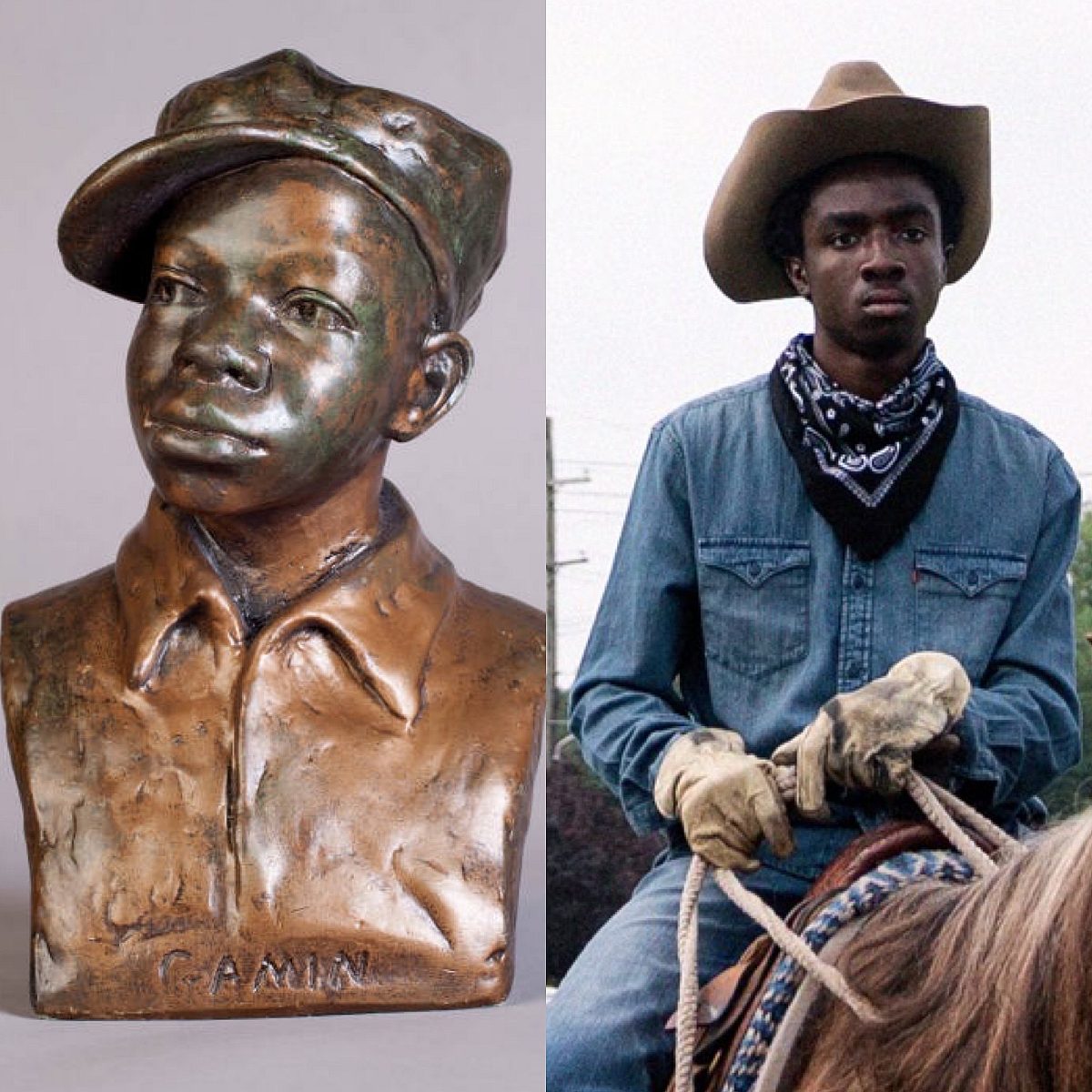
If you like… Concrete Cowboy (2020), you should look for Gamin by Augusta Savage (1930).
Perhaps modeled upon her nephew Ellis Ford, Savage imagined Gamin as representing the titular street urchins in NYC. Street-smart, solemn, and sensitive, Savage’s breakthrough work was an example of the thoughtful representation Black artists in America had been prioritizing. The 2020 film Concrete Cowboy focuses on a different sub-group of Black youth, a horse-riding club in downtown Philadelphia. It was lauded for bringing Black representation to the Western genre.
- Brittany Ashley, Communications Intern ‘22
Works in this Post
Honoré Daumier, Crrrrrr... Woman!.... to leave a man alone for four hours with these three howling children, ca. 1838. Lithograph on newsprint.
Paul-César Helleu, The Final Touch, ca. 1885. Pastel on paper.
Jean-Louis Forain, Dancer with a Mirror, ca. 1885. Pastel on wove paper.
Eugène-Louis Boudin, The Beach at Benerville, Low Tide, ca. 1892. Oil on canvas.
Henry Ossawa Tanner, View of the Seine, Looking toward Notre-Dame, ca. 1896. Oil on canvas.
Gaston La Touche, The Joyous Festival, ca. 1906. Oil on canvas.
Jane Peterson, Lure of the Butterfly, ca. 1914. Oil on canvas.
Augusta Savage, Gamin, ca. 1930. Plaster.